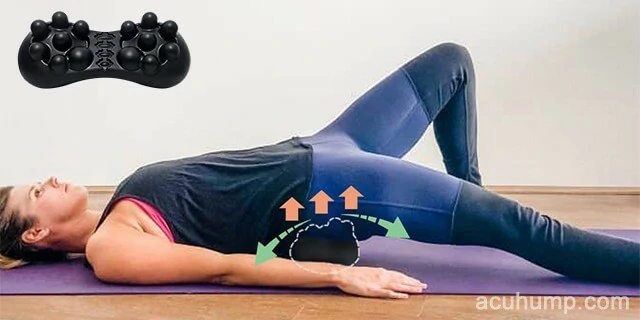I will help you grasp the causes of sciatica buttock pain and share some methods to get rid of discomfort at home!
Mamie says she has been experiencing intermittent discomfort for 2 years, and when it flares up, it keeps her awake all night. This makes her feel very anxious.1
If you have similar signs – pain, numbness, and tingling, and your sciatica gets worse at night, making it difficult to fall asleep or waking you up in the middle of the night. This article can help ease your concerns.
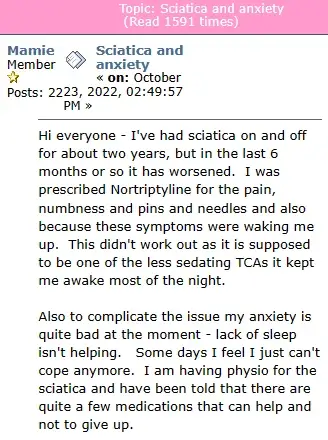
What are Symptoms of Sciatica Buttock Pain?
The sciatic nerve, like branches of a tree, originates from the L4 and L5 vertebrae in the lower back and the S1, S2, S3 vertebrae in the sacrum, and then converges into a thick trunk that passes through the buttocks and extends down the leg.2
As the largest nerve in the buttocks, compressed sciatic nerve can lead to symptoms such as pain and numbness in hips.
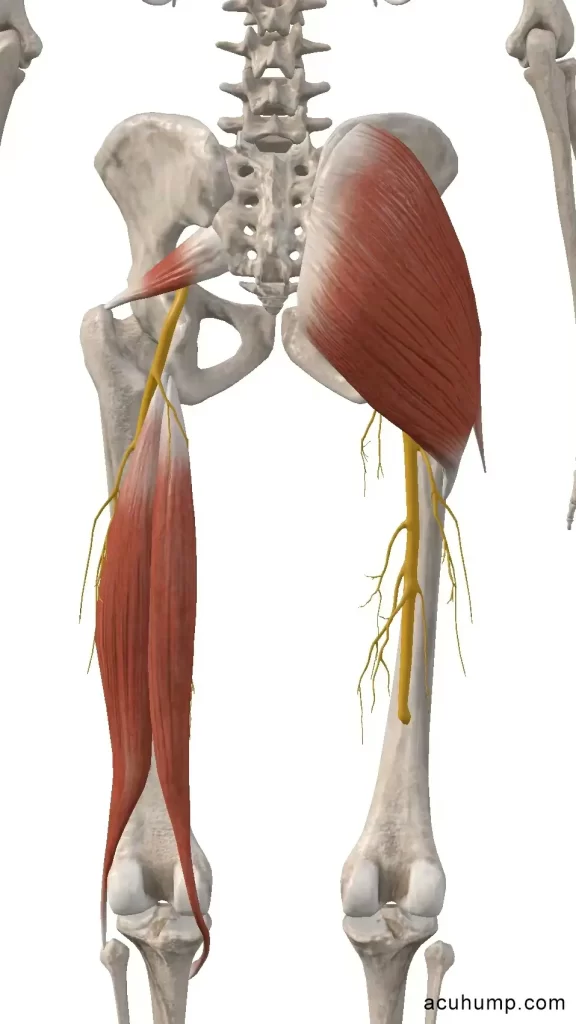
You may experience the following 3 conditions:
- Lower back pain radiating to the buttocks
- Pain in only one side of the buttocks
- Sciatic nerve pain in both buttocks
The 1st condition is discomfort originating from the compression of the sciatic nerve in the lower back, such as from a herniated disc or spinal stenosis.
The 2nd and 3rd conditions are buttock pain caused by the trapped sciatic nerve trunk by the pelvis, gluteal muscles in the buttocks, or hamstrings, known as deep gluteal syndrome. The discomfort can occur in the left or right buttock cheek, or it may also be in both deep buttocks. In severe cases, the nerve pain in buttock can shoot down the leg.
Therefore, our home remedies for sciatics includes releasing tension in the lower back and buttocks. To develop a better plan, we also need to further understand the underlying causes.
What Causes Sciatica Pain in Buttocks to Flare Up?
Based on Mamie’s post, I have summarized 3 factors contributing to sciatica buttock pain:
- Lack of exercise
- Excessive workout
- Psychological stress
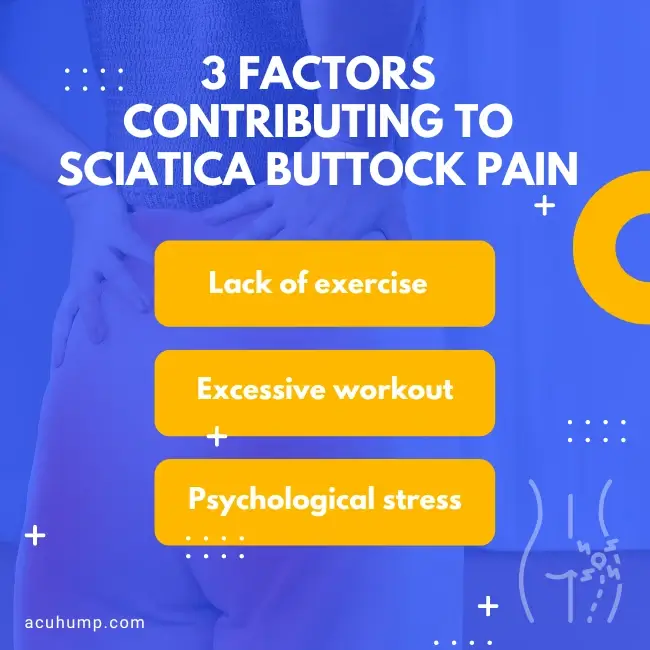
A lack of workout is the beginning of the ongoing nightmare of sciatica pain in buttocks. When you are consistently inactive, your muscle strength is weakened, and imbalanced muscles cannot coordinate effectively, leading to a reduced ability to handle workloads.
If you sit or stand for prolonged periods, driving, engage in extended physical activity such as hiking or running, and push your body beyond its limits, it cannot quickly recover to a normal state, resulting in buttock pain.
This discomfort can manifest in the following 3 conditions:
- Constant pain in the buttocks when sitting
- Relief or disappearance of buttock pain when lying down: This is generally caused by increased pressure within the spinal canal, which decreases when lying down and relieves symptoms
- Butt hurts when lying down in bed: This is known as dry sciatica, caused by tight buttock muscles compressing the sciatic nerve trunk, leading to unrelieved pain when lying down

Can stress cause sciatica?
When the last condition occurs and the discomfort is not relieved, it can affect sleep. The stress further exacerbates the discomfort.
Therefore, staying in a relaxed state, your issues will always be healed.
What is The Most Effective Pain Relief for Sciatica?
You can find lists of various methods to treat sciatica buttock pain, but they are all isolated. The following methods are more systematic and effective in helping your butt and nerve stay relaxed.
Keep this article, and in the next 5 minutes, you will crack free from the constraints of buttock pain.
Objectives of the plan:
- release the trapped sciatic nerve
- Restore muscle balance
Let’s begin with our strategy!
Stretches to Relieve Sciatica Buttock Pain
This is one of the most effective methods for loosening tight and pulled buttock muscles. You don’t need an appointment; you can do stretching exercises in the office, at home, in a hotel during a business trip, or while traveling.
The stretching includes 4 areas:
- Lower back
- Hip flexors
- Gluteal muscles
- Hamstrings
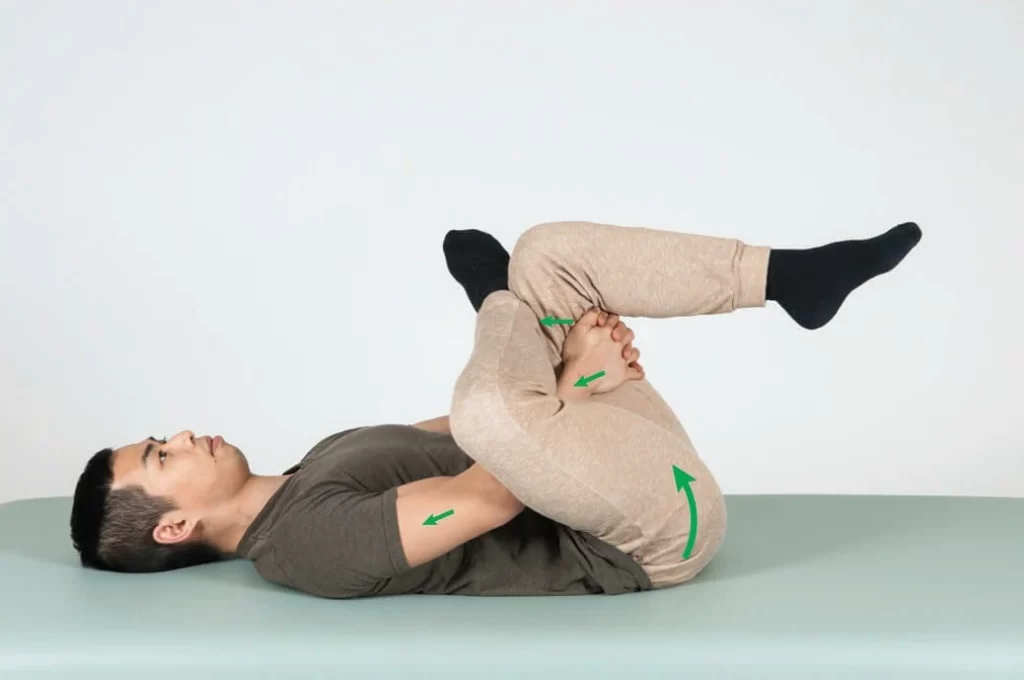
If any of these 4 areas are weak or tight, it leads to compensatory strength elsewhere, causing sciatic nerve pain in the buttocks. Therefore, you should systematically stretch these areas in sequence to create a healthy environment for the sciatic nerve, free from compression.
After maintaining this for a period, you will find that while stretching, your sciatica is eased, but it does not disappear. The relief cannot be sustained for a long time, as external force is needed to relieve muscle spasms more quickly.
Massage for Sciatica Buttock Pain
The sciatic nerve is located deep in the buttocks, where a professional therapist would use their elbow or fingers to apply pressure to the trigger points. You can also use tools such as a lacrosse ball, massage ball, or massage gun to apply pressure on these points.
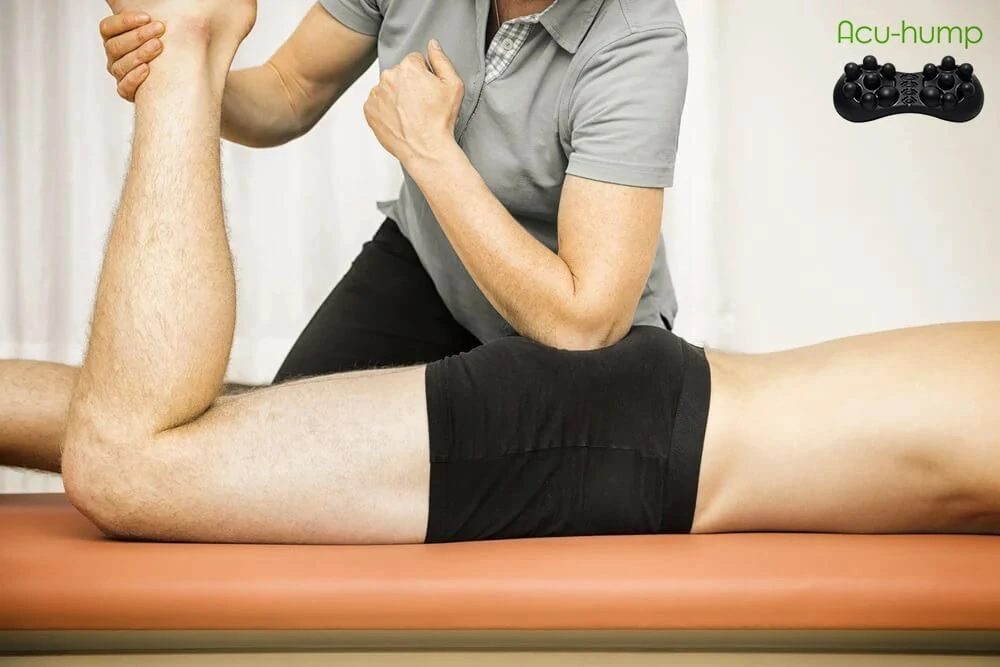
You can locate trigger points on both sides of the buttocks and then apply the tool to them, using sustained pressure to relieve sciatica.
This reflexology therapy can relieve sciatic nerve pain in the lower back and buttocks while also loosening muscle spasms.
Gradually, your discomfort will ease, allowing you to sit for longer periods or walk longer distances without experiencing a recurrence of discomfort.
Deep Tissue Massage Help Sciatica Buttock Pain
You can also use the following method to combine massage and stretching for a more effective comfort.
This technique combines myofascial release and trigger points massage. It relieves trigger points by releasing muscle spasms, reducing the likelihood of muscle knots reappearing due to surrounding tension.
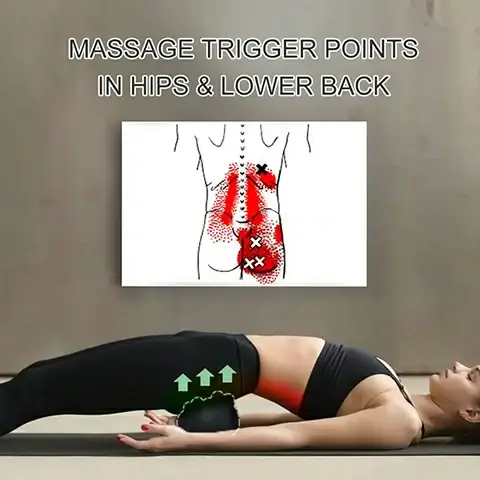
By deeply massaging the buttock muscles, tight glutes are released, freeing the trapped sciatic nerve. Each localized pressure application should last 3-5 minutes, and with increasing frequency of use, the tight glutes will gradually loose, ultimately achieving complete release.
What is The Best Massager for Sciatica Discomfort
This is our innovative Acu-hump, an essential self-release tool for relieving sciatica in the buttocks. Its unusual appearance and simple design can help loosen trapped sciatic nerve.
It acts like a therapist’s hands, allowing simultaneous pressure on both sides of your buttocks or lower back, preventing discomfort transfer due to muscle imbalances.

Additionally, it can be used for stretching exercises. Spending 10 minutes performing the Acu-hump stretching routine can release the trapped sciatic nerve.
The routine consists of 6 movements, targeting 6 areas from the lower back to the buttocks:
- Lower back
- SI joint
- Hip Flexors, Psoas
- Pelvis
- Gluteal muscles
- Hamstrings
Make it a daily routine to escape the trap of sciatica. Whether you long sitting or have poor posture, it can help keep your buttocks relaxed.
Perform the Acu-hump stretching routine twice a day, for 10 minutes each time. Save it on your phone to maintain the best condition for your sciatica at all times.
Deep pressure and stretching exercises by using the Acuhump, you can timely loosen tight muscles and release the trapped sciatic nerve.

Save Sciatica Stretching PDF on your phone!
Leave the discomfort in the past!
Preventive Measures and Other Relief Methods?
Stretching and relaxing muscles is an ongoing battle. There’s no “release” and then the problem magically disappears. It can help release tension, but muscle tension and tightness will always occur and come back, especially if you don’t change your habits.
Preventive methods vary due to the causes of nerve damage. Avoid prolonged sitting or lying down, with pressure on the buttocks. Having strong back and abdominal muscles is crucial for avoiding sciatic nerve pain. Engage in proper exercise to strengthen your core and buttock muscles.
If your sciatic nerve pain is flaring up, self-care measures at home may include:
- Not recommending bed rest
- Minimize activity in the initial few days. Then gradually resume your daily activities
- Using Acu-hump for simple stretching exercises
- For the first 6 weeks after the onset of pain, do not lift heavy objects or twist the back
After the signs are relieved, typically 2-3 weeks using Acu-hump, engage in buttock, lower back, and core muscle exercises to strengthen muscle strength and improve flexibility.
What Treatments Can Doctors Provide?
When sciatica won’t go away, you need to seek professional treatment.
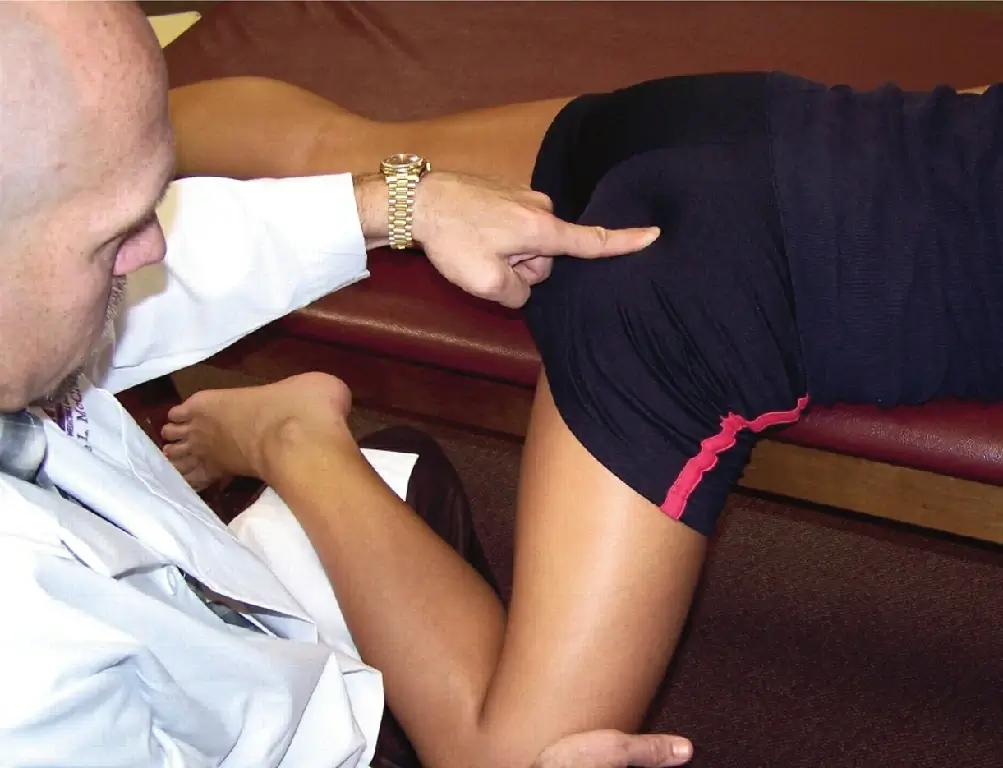
Typically, you will receive one of the following the 5 treatments:
- Heat therapy: When the sciatic nerve strikes you occasionally, you should use heat therapy to relieve your lower back and buttock area.
- Muscle relaxants: While not a doctor’s primary treatment, they are typically used when the condition affects your daily life to provide urgent care to help with sciatica pain. These drugs act on the central nervous system, making you feel tired and drowsy, to provide a chance for the truly sciatica relief.
- Acupuncture: Traditional Chinese medicine uses acupuncture points for reflex therapy and also acupunctures muscles to restore elasticity. It’s usually combined with cupping.
- Cupping therapy: This is the most effective method for muscle spasms causing sciatica. You typically experience relief shortly after use. However, it often leaves red, purple, or black marks that take about a week to disappear.
- Surgery: In the worst cases, the piriformis muscle in the buttocks may be removed to prevent compression of the sciatic nerve that causes pain. However, most sciatica patients (80% to 90%) improve without surgery.3
These are all the strategies for relieving sciatica deep buttock pain! Consideration alone cannot solve the issues. Take immediate action so that the discomfort leaves your body sooner.
